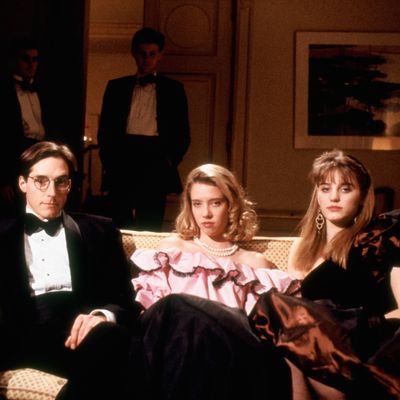
In college, I was an RA at NYU’s nerdiest dorm, an easy job made even easier by the fact that my residents spent all their time watching television. One unforeseen aspect of the gig, though, was holiday duty: Over winter break, RAs had to spend a few three-day shifts back at their dorms, alone, just in case anything happened. Nothing ever happened; no one was there. Wandering the hallways on rounds was the closest I have ever felt to being in The Shining.
With nothing to do and no one to talk to, I took to roaming the streets, and discovered something wonderful: Not only were the dorms empty, the entire city was, too. By my estimation, it was as if a solid two-thirds of the population of Manhattan had simply disappeared, Leftovers style. There were no lines, no crowds, and the sidewalks felt like they were 50 feet wide. Where once were throngs of commuters, now there were only polite squadrons of German tourists. It was like being in a small town, except that nobody knew your name. This was not real life; it was a dream world.
This version of the city doesn’t pop up onscreen much — most New York Christmas movies are either about the anticipation of the season, or a man writing letters to Love, Time, and Death — but by coincidence, one of the two DVDs I bought to pass the time turned out to be the perfect accompaniment. The Criterion cover of Whit Stillman’s Metropolitan is an etching that wouldn’t be out of place on a Fitzgerald paperback, and the 1990 film itself shares this same sense of taking place in a vanished world. Beside the vague feeling that the characters are living through the decline of the old aristocracy — a vibe that could have placed the film at any point in the post-war era — it’s never quite clear in which decade the film is set.
But in another sense, the timing is incredibly specific: Metropolitan is a winter-break film. Its characters — nine rich young people from the Upper East Side, and one slightly less rich young person from the Upper West Side — have returned to the city for debutante season; most of the film takes place at the after-parties of various balls, where they lounge around in tuxedos and gowns, gossiping, playing cards, and discussing Jane Austen. The immense privilege of these urban haute-bourgeoisie (UHBs, in one memorable phrasing) means they have no real responsibilities, and, until the very end, most of their debates about ethics and morals take place on a firmly theoretical level. They spend most of the film in a sense of stasis, waiting for something to happen. You don’t have to have a trust fund to relate to that part of winter, the liminal period between unwrapping presents and returning to normal life.
And thanks to the film’s minuscule budget, Stillman even gets the atmosphere of empty holidays New York right. There are no crowd scenes — he could hardly afford costumes (most were donated), much less extras. Landmarks like the Plaza are seen only in brief establishing shots, filmed quickly from the sidewalk. The vast majority of scenes take place in a few revolving living rooms, always at night (the lack of sunlight is another thing the film gets right), which only adds to the film’s insularity: At times it seems like Metropolitan’s New York has a population of 100 people, max.
This is a very specific sensation, I know, but it’s one that I treasure dearly. You can keep your Miracle on 34th Streets and your Elfs. For me, only Metropolitan can capture the strange magic of New York after Christmas — the real most wonderful time of the year.





